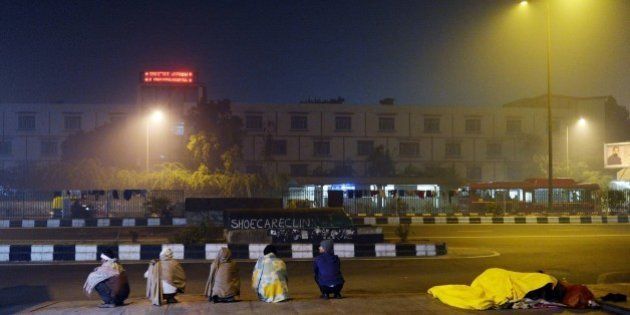
Two state-of-the-art public hospitals in New Delhi are barely operational years after they officially opened - not for lack of funding but because officials did not spend the millions of dollars allocated to treat heart and kidney patients.
The empty hospitals in the heart of the Indian capital are emblematic of the paralysis gripping a public health system that is responsible for some of the world's worst health indicators. Many of the country's 1.2 billion people have a choice between expensive private care, or no care at all.
Prime Minister Narendra Modi faces many challenges to his stated goal of providing universal public health coverage, but one of the most daunting is ending the logjams that mean officials consistently fail to use their budgets.
At the 300-bed Janakpuri Super Speciality Hospital, gleaming marble-floored corridors disappear into dark wings, thick chains locking the doors to most of the five-storey building. Wards lie empty, without beds. It officially opened in 2008.
In another part of the city of 16 million people, the Rajiv Gandhi Super Speciality Hospital sits in a landscaped 13-acre complex. It started outpatient services in 2003 but more than a decade later only six beds - of the 650 the hospital was built for - receive overnight patients.
The hospitals were allocated $48 million in the current financial year but still lack basic equipment and, crucially, doctors. They will only spend a fraction of the amount by year-end: under 20 percent in the case of Janakpuri hospital.
A Reuters investigation found no evidence that corruption was responsible for the situation. Instead, officials and health experts blamed a tortuous procurement process, political wrangling and bureaucratic incompetence.
Janakpuri hospital Director M.M. Mehndiratta said he waited 15 months for approval to hire more doctors, with the request travelling to Delhi's top health officials before getting stuck for months in the administrative and finance departments.
"There have been times when I have felt like going to my old job or shifting to the private sector," Mehndiratta said with a laugh. He was earlier a doctor at the G.B. Pant Hospital, one of the biggest in Delhi.
India records the world's highest number of deaths during pregnancy and high rates of child mortality from diarrhoea, pneumonia and measles. Inadequate health infrastructure and a scarcity of doctors mean people in small towns and villages end up travelling long distances to get basic care.
India has 0.7 hospital beds per 1,000 people, less than a third of the global average of 2.7 beds, a World Health Organization (WHO) report said last year. There is one doctor for every 1,400 people, lower than neighbouring Pakistan.
India's health system will need to add 3.6 million hospital beds, 3 million doctors and 6 million nurses over the next 20 years to meet the needs of the growing population, consultants PwC India estimate.
"We buy an X-ray machine, but there is no X-ray operator," Health Minister J.P. Nadda said while discussing general health funding with reporters last month. "Money is not the major factor, it is (the lack of) optimal utilisation."
UNDERSPEND
Data compiled by Reuters in collaboration with the Public Health Foundation of India shows the under-utilisation is a national problem. Even though India revised down its federal health budget mid-year in all but one year since 2005, the country only once managed to spend all the funds.
Graphic: India's ailing health sector reut.rs/1KL2jxj
India spends a tiny 1 percent of gross domestic product on public health, less than Afghanistan and Sierra Leone. Federal budget cuts exceeded 15 percent in the last three years, partly because India tightened the purse strings to meet challenging fiscal deficit goals.
A senior health official in New Delhi blamed delays such as those plaguing Rajiv Gandhi and Janakpuri hospitals on the incompetence of government employees and a "lethargic and slow" process of selecting vendors. Fearing corruption charges, officials work in an environment of "procurement phobia".
"We need clearances from about 10 agencies before laying even a brick," said the official, who asked not to be named.
Delhi's local government also spent years debating whether the vacant multi-speciality hospitals should be run in partnership with the private sector.
"Finally the government thought, since we have invested money, we will run it," the government official said.
Since the Delhi government began building the Rajiv Gandhi and Janakpuri hospitals in 1998, dozens of private hospitals have sprung up to meet the city's growing medical needs.
Industry body ASSOCHAM estimated in 2013 that India's private hospital sector would grow at 20 percent annually and become a $125 billion market by 2017.
The private sector now accounts for 80 percent of India's healthcare delivery market.
Apollo Hospitals Enterprise Ltd., India's largest listed hospital chain by revenue, classifies inadequate public spending as one of its growth drivers. According to Thomson Reuters data, Apollo and rival Fortis Healthcare Ltd have registered annual revenue growth in excess of 15 percent for the last five years.
